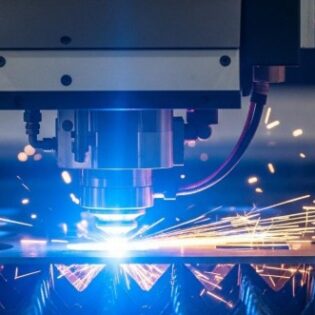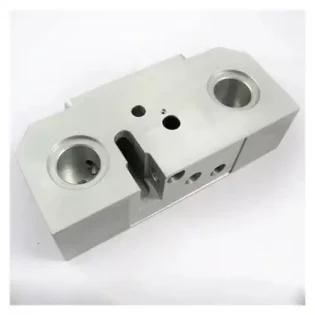Reasons for the difficulty in processing titanium alloy
1Low thermal conductivity: Titanium alloy has a low thermal conductivity, resulting in high cutting temperatures during machining. Under the same conditions, the cutting temperature of TC4 alloy is more than twice as high as that of Grade 45 steel. The heat generated during machining is difficult to dissipate from the workpiece. Consequently, the cutting tools experience high temperatures, rapid wear of cutting edges, and reduced tool life.
2Low modulus of elasticity: Titanium alloy has a low modulus of elasticity, leading to significant springback on the machined surface. This is especially pronounced when machining thin-walled components, resulting in strong friction between the trailing edge of the cutting tool and the machined surface, leading to tool wear and chipping.
3Chemical reactivity: Titanium alloy exhibits strong chemical reactivity. At high temperatures, it readily reacts with oxygen, hydrogen, and nitrogen, causing an increase in strength and a decrease in ductility. The oxygen-enriched layer formed during heating and forging processes further complicates mechanical machining.
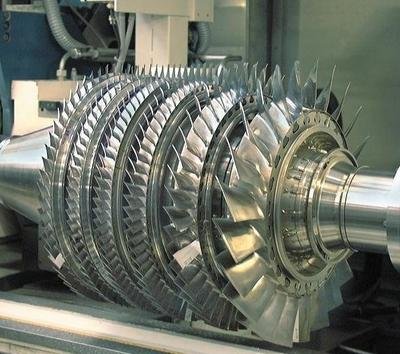
Principles of Machining Titanium Alloy Materials
During the machining process, the choice of tool material, cutting conditions, and machining time all have an impact on the efficiency and cost-effectiveness of cutting titanium alloys.
1.Selecting appropriate tool materials
Considering the properties of titanium alloy materials, machining methods, and processing conditions, the selection of tool materials should be done rationally. The tool material should be commonly used, cost-effective, have good wear resistance and high thermal hardness, and possess sufficient toughness.
2.Improving cutting conditions
The rigidity of the machine tool-fixture-tool system should be enhanced. Clearances between different parts of the machine tool should be adjusted properly, and the radial runout of the spindle should be minimized. The workpiece should be securely clamped in the fixture, ensuring sufficient rigidity. The cutting portion of the tool should be kept as short as possible, and the thickness of the cutting edge should be increased, while ensuring sufficient chip space, in order to enhance the strength and rigidity of the tool.
3Apply appropriate heat treatment to the workpiece material
By employing heat treatment, the properties and metallographic structure of titanium alloy materials can be altered, aiming to improve their machinability.
4Choose appropriate cutting parameters
The cutting speed should be kept low. This is because the cutting speed has a significant impact on the temperature of the cutting edge. Higher cutting speeds result in a drastic increase in cutting edge temperature, which directly affects the tool life. Therefore, it is crucial to select an appropriate cutting speed.
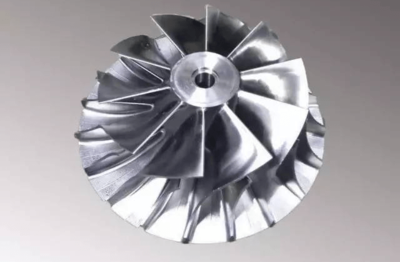
Machining Techniques
1.Turning
Turning titanium alloy products can achieve good surface roughness and minimal work hardening. However, it leads to high cutting temperatures and rapid tool wear. To address these characteristics, the following measures are taken mainly in terms of tooling and cutting parameters: Tooling material: YG6, YG8, YG10HT are selected based on the existing conditions in the factory. Tool geometry parameters: Appropriate rake and relief angles, as well as rounded cutting edges. Lower cutting speeds, moderate feed rates, deeper cutting depths, sufficient cooling. When turning the outer diameter of the workpiece, the tool tip should not be positioned above the workpiece center to avoid tool interference. For finishing and turning thin-walled parts, a larger main rake angle is used, typically ranging from 75 to 90 degrees.
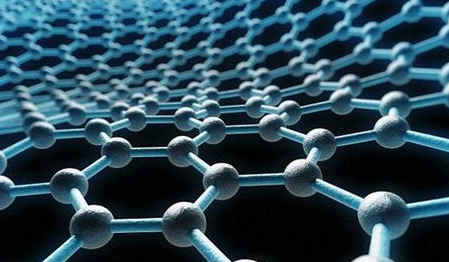
2.Milling
Milling titanium alloy products is more challenging compared to turning because milling involves intermittent cutting, and the chips tend to adhere to the cutting edge. When the chip-adhered teeth re-engage with the workpiece, they can dislodge and take away a small portion of the tool material, leading to tool edge failure and significantly reducing tool durability.
Milling method: Generally, conventional milling is employed. Tooling material: High-speed steel M42. Conventional alloy steel processing does not usually utilize conventional milling due to the influence of machine tool screw and nut clearances. In conventional milling, the milling cutter acts on the workpiece, generating a cutting force in the feed direction that can cause intermittent worktable movement, resulting in chattering. For conventional milling, the cutting edges encounter a hardened surface at the initial entry, which can lead to tool damage. However, in climb milling, the chips go from thin to thick, and initially, the tool may experience dry friction with the workpiece, exacerbating chip adhesion and tool edge failure. To ensure smooth milling of titanium alloys, attention should be given to reducing the rake angle and increasing the relief angle compared to standard milling cutters. Milling speed should be low, and the use of sharp-toothed milling cutters is preferred while avoiding the use of face milling cutters.
3Threading
Threading titanium alloy products can result in larger surface roughness values and higher torque due to the fine chips that easily adhere to the cutting edge and workpiece. Improper selection and handling of the tap can lead to work hardening, extremely low processing efficiency, and occasional tap breakage.
It is necessary to prioritize the use of high-quality taps with appropriate tooth engagement. The number of teeth on the tap should be fewer than standard taps, usually around 2 to 3 teeth. The cutting cone angle should be large, and the tapered portion is generally 3 to 4 times the thread pitch length. To facilitate chip evacuation, a negative rake angle can be ground on the cutting cone section. Selecting shorter taps can increase tap rigidity. The reverse tapered portion of the tap should be appropriately enlarged compared to standard taps to reduce friction between the tap and the workpiece.
4Reaming
When reaming titanium alloy, tool wear is not severe, and both carbide and high-speed steel reamers can be used. When using carbide reamers, it is necessary to adopt a similar process system rigidity as in drilling to prevent reamer breakage. The main problem encountered when reaming titanium alloy holes is poor surface finish. It is necessary to narrow the cutting edge width with an oilstone to avoid adhesion between the edge and the hole wall, while ensuring sufficient strength. Generally, a cutting edge width of 0.1 to 0.15 mm is preferred.
The transition between the cutting edge and the calibration section should be a smooth arc, and it should be promptly reground after wear. It is important to ensure consistent size of the circular arcs on each tooth. If necessary, the size of the calibration section can be increased.
5.Drilling
Drilling titanium alloy is relatively challenging and often encounters issues such as tool burning and drill breakage during the machining process. This is mainly caused by factors such as poor tool grinding, inadequate chip evacuation, insufficient cooling, and poor process system rigidity. Therefore, attention must be paid to proper tool grinding in titanium alloy drilling. This includes using a large point angle, reducing the front angle of the outer edge, increasing the back angle of the outer edge, and adding a reverse taper to the drill point 2-3 times that of a standard drill.
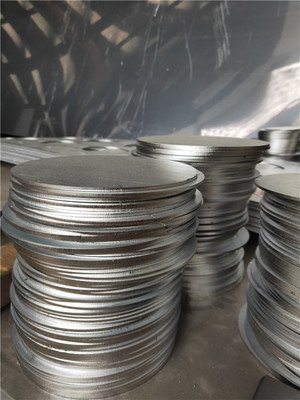
Frequent tool retraction and timely removal of chips are important, and the shape and color of the chips should be observed. If feather-like chips or color changes occur during drilling, it indicates that the drill bit is dull and should be promptly replaced or reground.
The drill fixture should be securely fixed on the worktable, and the guiding cutting edge of the drill should be close to the work surface. Using shorter drill bits is preferable. Another important consideration is when using manual feed, the drill bit should neither advance nor retreat in the hole, as this can cause friction between the drill edge and the work surface, resulting in work hardening and dulling of the drill bit.
6.Grinding
Common issues encountered in grinding titanium alloy components are clogging of the grinding wheel due to chip adhesion and surface burn on the components. The poor thermal conductivity of titanium alloy is the main reason for generating high temperatures in the grinding zone, resulting in adhesion, diffusion, and intense chemical reactions between titanium alloy and the abrasive material. Chip adhesion and clogged grinding wheel significantly decrease the grinding ratio. Diffusion and chemical reactions further lead to surface burn on the workpiece, resulting in reduced fatigue strength, which is particularly evident when grinding titanium alloy castings.
To address this problem, the following measures are taken:
- Select appropriate grinding wheel materials: Green silicon carbide TL. Slightly lower wheel hardness: ZR1.
- Control the cutting parameters of titanium alloy materials during grinding, including tool materials, cutting fluid, and process parameters. This is essential for improving the overall efficiency of titanium alloy material machining.

